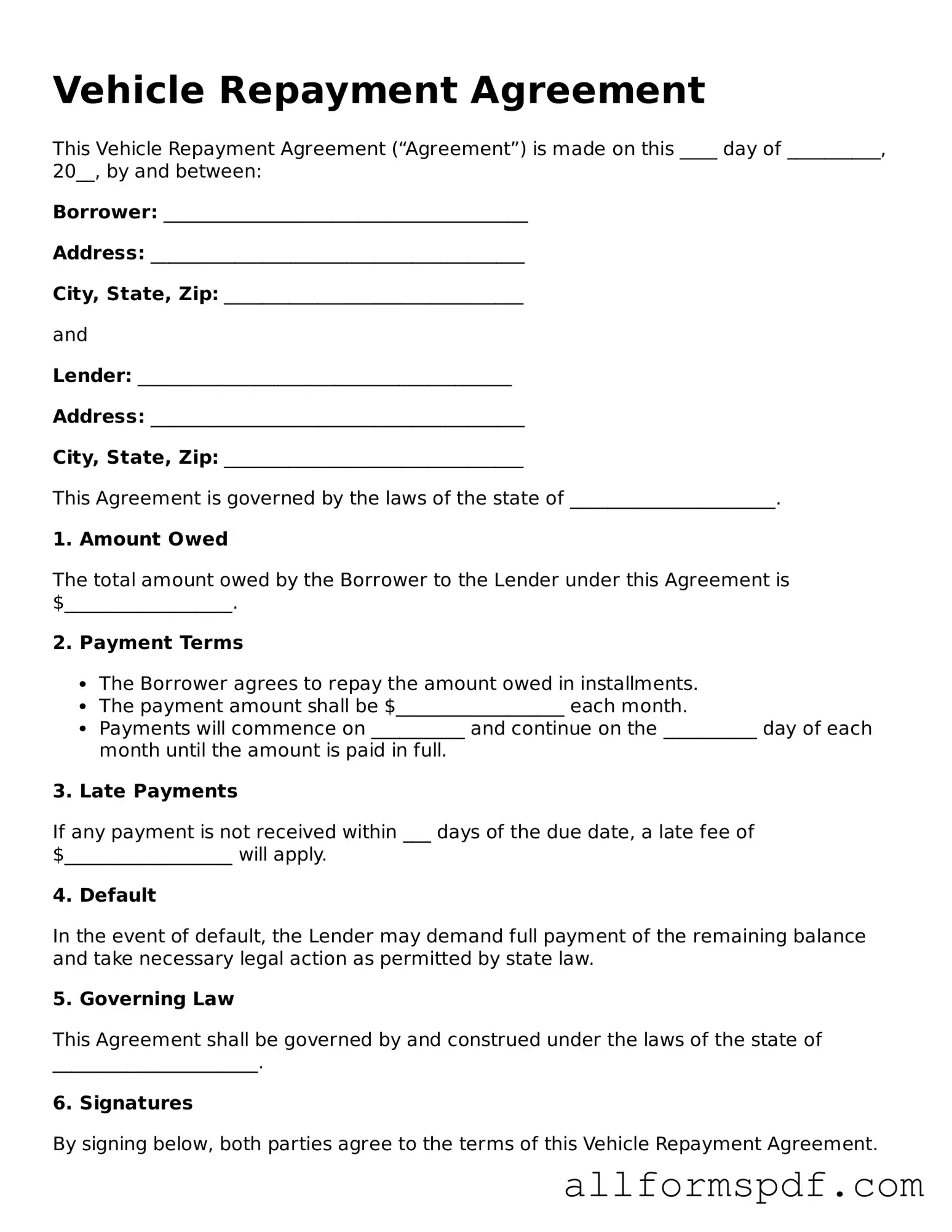Completing a Vehicle Repayment Agreement form can be straightforward, but many individuals encounter common pitfalls. One frequent mistake is failing to provide accurate personal information. This includes not only names and addresses but also the correct vehicle identification number (VIN). Incorrect details can lead to complications in processing the agreement.
Another common error is neglecting to read the terms and conditions carefully. Individuals may skip over important clauses that outline responsibilities and consequences. Understanding these terms is crucial for both parties involved, as it sets clear expectations and helps avoid future disputes.
Many people also forget to include all necessary documentation. Supporting documents, such as proof of income or identification, may be required to finalize the agreement. Without these, the form may be deemed incomplete, causing delays or rejection of the application.
Some individuals make the mistake of not signing the form. A signature is essential as it indicates agreement to the terms outlined in the document. Omitting a signature can render the entire form invalid, leading to further complications.
Inaccurate financial information is another frequent issue. When individuals provide misleading or incorrect figures regarding their income or expenses, it can result in unfavorable terms or even denial of the agreement. Being honest and precise is vital for a successful outcome.
People sometimes overlook the importance of dates. Failing to include the correct date on which the agreement is signed can create confusion. It is essential to ensure that all dates are accurate and align with the rest of the information provided.
Some may not seek assistance when needed. If unsure about how to fill out the form, individuals might hesitate to ask for help. Seeking guidance from a knowledgeable source can clarify doubts and prevent errors.
Another mistake involves not keeping a copy of the completed form. After submission, it is important to retain a copy for personal records. This can be helpful for future reference or in case of disputes.
Lastly, individuals sometimes fail to follow up after submitting the form. Checking in on the status of the agreement can ensure that everything is processed correctly and that there are no outstanding issues that need to be addressed.
